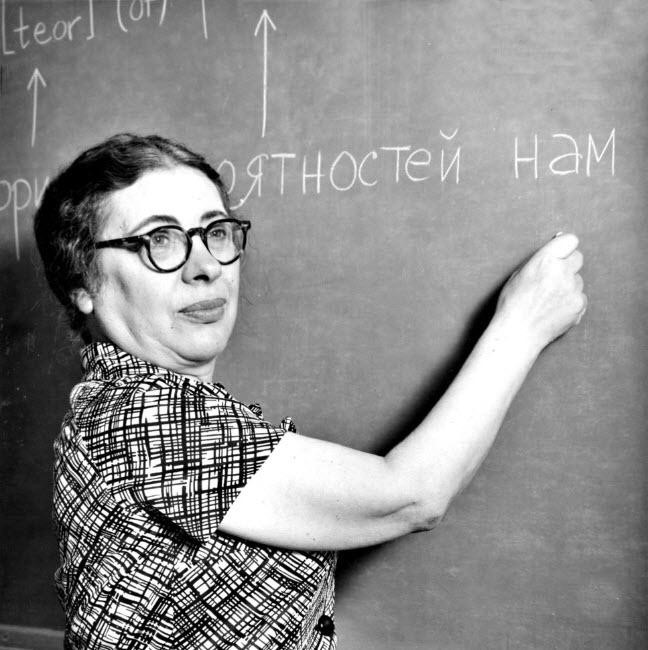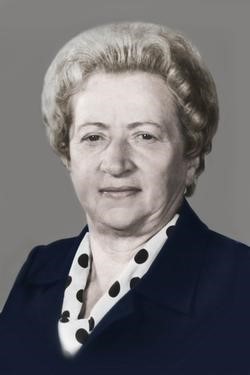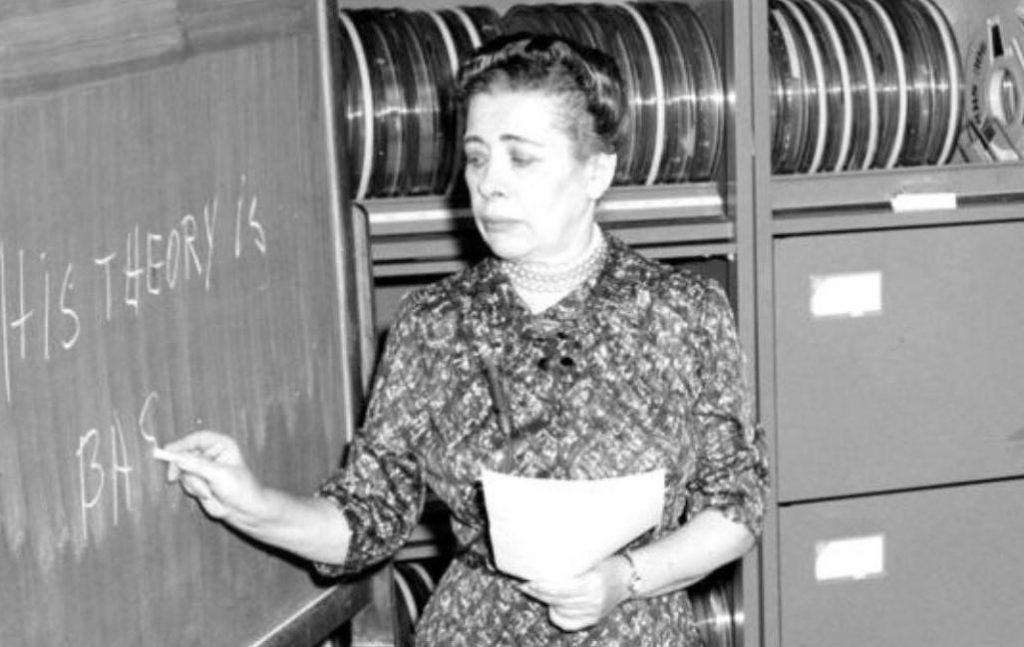How a Jewish woman and a Ukrainian woman launched the computer age
In the mid-twentieth century, two distinguished women were instrumental in the creation of the first computers and the first programming languages—and both of them were born in Ukraine. The birth anniversary of the American "mother of programming" Ida Rhodes (1900–1986) offers an opportunity to compare her life path with the tragedies and successes of the Soviet-era computer genius Kateryna Yushchenko.
Ida Rhodes (name at birth: Hadassah Itzkowitz) was born 120 years ago in a Jewish town located between Nemyriv and Tulchyn. She did not provide more exact information, but the town of Bratslav is situated mid-way between those two towns. Her parents, David and Basia, were middle class, but they supported their daughter's thirst for knowledge.
A countess who owned all the surrounding lands took a liking to the beautiful, smart girl. She began teaching various science subjects to her and other talented offspring of local residents. The young girl was frequently invited to the countess's palace, where kosher foods were specially prepared for the Jewish guest. The countess took the little girl for rides on her carriage and pointed out her various factories, describing how they would develop.
By 1913, when the Itzkowitz family immigrated to the U.S., the girl already possessed basic scientific knowledge and had a great desire to study. So, it comes as no surprise that by 1923 she obtained a bachelor's degree and a master's degree in Mathematics from Cornell University. A few years later, she completed her doctorate at Columbia University.
After her divorce following a short-lived marriage, she kept the name Rhodes and adopted the name Ida, which she chose for herself after coming to the United States. She did not find employment in her field right away, and for several years she worked as a nurse in a hospital and a bookkeeper in her father's clothing shop.
However, she was fascinated by mathematics and scientific discoveries. In 1922 she was so excited by a lecture delivered by Albert Einstein that when he spoke to her, she could not utter a single word. In 1935, when Einstein met her a second time, he asked: "So, have you learned how to speak?"
In 1940 fortune smiled upon her: She was hired to work on a federal project to create mathematical tables. Four hundred and fifty of the best mathematicians were involved in the project to create tables of various useful functions in architecture and engineering. After the United States entered the Second World War, Rhodes and her colleagues did calculations for the U.S. Navy, as well as a mathematical analysis for the Manhattan Project to produce the atomic bomb.
In 1947 Rhodes participated in developing the first electronic computers and became a consultant at the National Applied Mathematics Laboratories of the National Bureau of Standards.
Ida Rhodes was a pioneer in the world of programming. She designed the C-10 programming language for the UNIVAC computer. In the early 1950s, this was the first commercial computer in the world, manufactured in the United States.
The computers of the United States Social Security Administration (SSA) were designed and programmed by Ida Rhodes.
Rhodes advised private companies and government agencies, explaining how computers can help them work more effectively. She also taught coding and programming methods for people with physical limitations.
During a public lecture in 1952, Rhodes announced the beginning of a new era, predicting the creation of computers with personal screens and the development of new programming languages, video communication, and graphical interface.
Rhodes developed machine translation techniques. She predicted a future in which computers would be used for the benefit of mankind. In the early 1960s, she rephrased the words of John F. Kennedy: "Don't ask what the machine can do for you. Ask what you can do, along with the machine, for your country and for the world."

The U.S. Department of Commerce awarded Ida Rhodes a Gold Medal for "significant pioneering leadership and outstanding contributions to the scientific progress of the Nation in the functional design and the application of electronic digital computing equipment."
For many years Rhodes maintained a friendship with another eminent woman, the Kyiv-born Golda Meir, who urged her repeatedly to move to Israel. But Rhodes remained in the U.S. in order to take care of her aging parents. In 1977 she gifted the Jewish people a "Jewish Holiday" algorithm that is used in calendar programs to this day.
Specialists note that Ida Rhodes's influence on the world of coding and computer technology is felt to the present day.

Let us return to Ukraine, where in the town of Chyhyryn, Kateryna Yushchenko (1919–2001), a future star of Soviet computer science, was born. Today Chyhyryn is located in Cherkasy oblast, next door to Vinnytsia oblast, the birthplace of Hadassah Itzkowitz (Ida Rhodes).
When Yushchenko turned eighteen years old in 1937, her father was arrested as a Ukrainian nationalist. When her mother went to the NKVD building to make inquiries about her husband, she also was arrested. Both parents perished in the GULAG.
The young woman was refused admission to Kyiv University because she was the "daughter of enemies of the people." She moved to Uzbekistan, where the local university was offering scholarships and room and board to anyone who wanted to study. There, during the difficult years of the Second World War, she obtained an education in mathematics. In 1946 she began working in the Lviv branch of the Institute of Mathematics at the Academy of Sciences of Ukraine, under the direction of Academician Borys Hnedenko.
In 1950 Yushchenko begins working at this institute in Kyiv. In 1954 Yushchenko's team designed the first programmed computer in the USSR and Europe. In 1955 she created one of the first top-level programming languages in the USSR, known as Address. She also wrote algorithms for the first computer, including algorithms for ballistic missiles and space systems.
Kateryna Yushchenko was the first Doctor of Physical and Mathematical Sciences in the USSR to be awarded this degree for her work in programming. She became a corresponding member of the Academy of Sciences of Ukraine in 1979.
Ida Rhodes and Kateryna Yushchenko, a Jewish woman and a Ukrainian woman, probably never met, all the more so as Soviet science was classified and inaccessible to foreign colleagues. But these women worked along parallel paths and achieved immense successes and revolutionary triumphs in absolutely new spheres of human activity.
Looking at the difficult life of Kateryna Yushchenko, one can only pose the following rhetorical question: What would have happened if Hadassah Itzkowitz had experienced the Stalinist repressions and the Nazi genocide if she had remained in Ukraine and not immigrated with her parents to the United States?
Text: Shimon Briman (Israel)
Photo: Wikipedia
Translated from the Ukrainian by Marta D. Olynyk.
Edited by Peter Bejger.




















